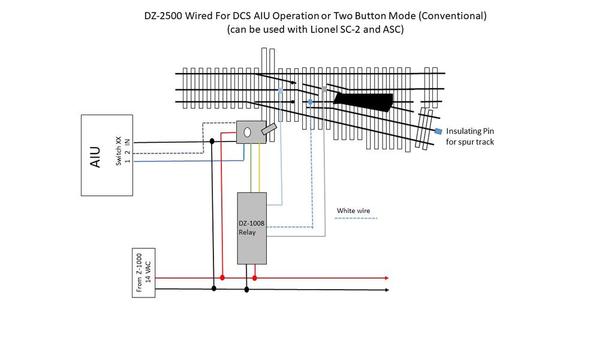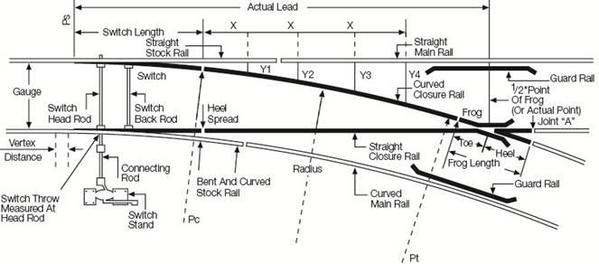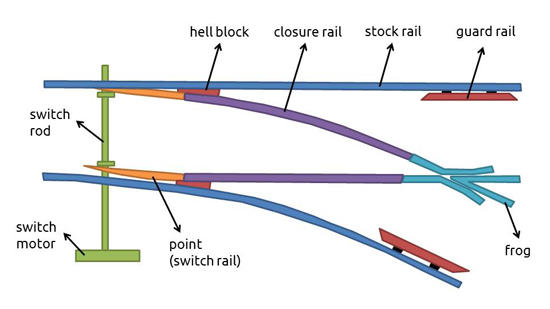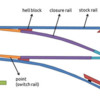I've seen threads related to wiring the "closure-rails" on atlas switches, but I am not certain what they are referring too.
I don't think we've answered Rocky's question pertaining to wiring an Atlas switch. I assume Rocky is talking about a 3 rail switch since it was posted on this forum.
The issue with the closure rails on a 3 rail switch is the center rail pickup roller (HOT) on an engine or car rolls over the closure rails (COMMON like outside rails), so to keep from shorting these rails are not powered. Take a look at this FasTrack switch and follow along the center rails and you can see how they cross the closure rails.
![681252-01[1] 681252-01[1]](https://ogrforum.ogaugerr.com/fileSendAction/fcType/0/fcOid/73509797428261695/filePointer/73509797438996118/fodoid/73509797438996113/imageType/MEDIUM/inlineImage/true/681252-01%255B1%255D.jpg)
The center rail gap as it crosses the closure rail is normally not an issue, especially on engines/cars that have more than one pickup roller. However, on long switches such as the Atlas #8 this gap can be large and under certain situations the engine can lose power going over the switch.
To fix this, the closure rail needs to be powered via the HOT side of the transformer. Depending on how the switch is set, this would cause a short if the HOT power was on the closure rail all the time. So to make this work the HOT power to the closure rail must be turned on or off depending on switch position. To turn the power on and off each closure rail, or more accurately switch the power between the straight and curved closure rails as needed to provide power to the center pickup roller, a relay is used. Below is a diagram showing Z-Stuff electronics and how their DZ-1008 relay is used to power the closure rails.

The relay gets center rail power from the light blue wire and depending on the position of the switch machine, sends that power to one of the two closure rails (dashed blue wire and gray wire). If the switch is set straight, the power is sent to the curved closure rail. If the switch is set to turn out, the power is sent to the straight closure rail.
Keep in mind for most turnout installations "wiring the closure-rails" is not necessary.
Anyway, I think this is what Rocky was asking about.








![681252-01[1] 681252-01[1]](https://ogrforum.ogaugerr.com/fileSendAction/fcType/0/fcOid/73509797428261695/filePointer/73509797438996118/fodoid/73509797438996113/imageType/MEDIUM/inlineImage/true/681252-01%255B1%255D.jpg)

![681252-01[1] 681252-01[1]](https://ogrforum.ogaugerr.com/fileSendAction/fcType/0/fcOid/73509797428261695/filePointer/73509797438996118/fodoid/73509797438996113/imageType/SQUARE_THUMBNAIL/inlineImage/true/681252-01%5B1%5D.jpg)

